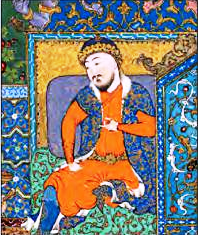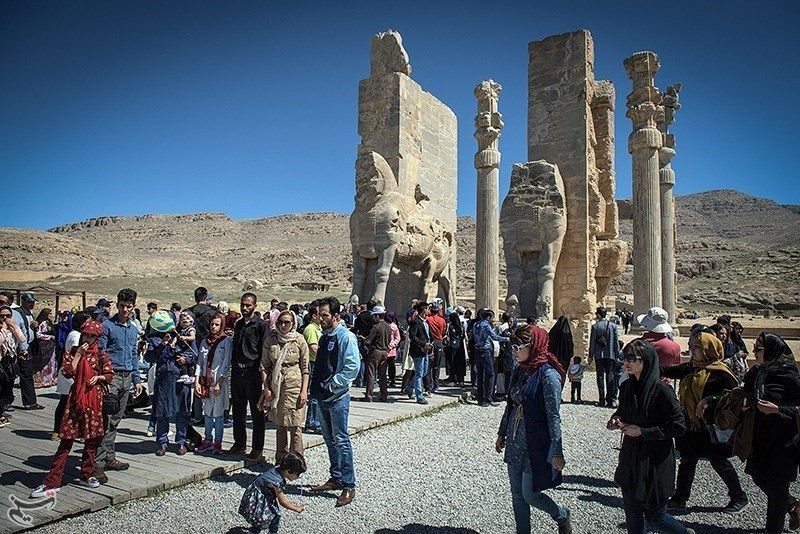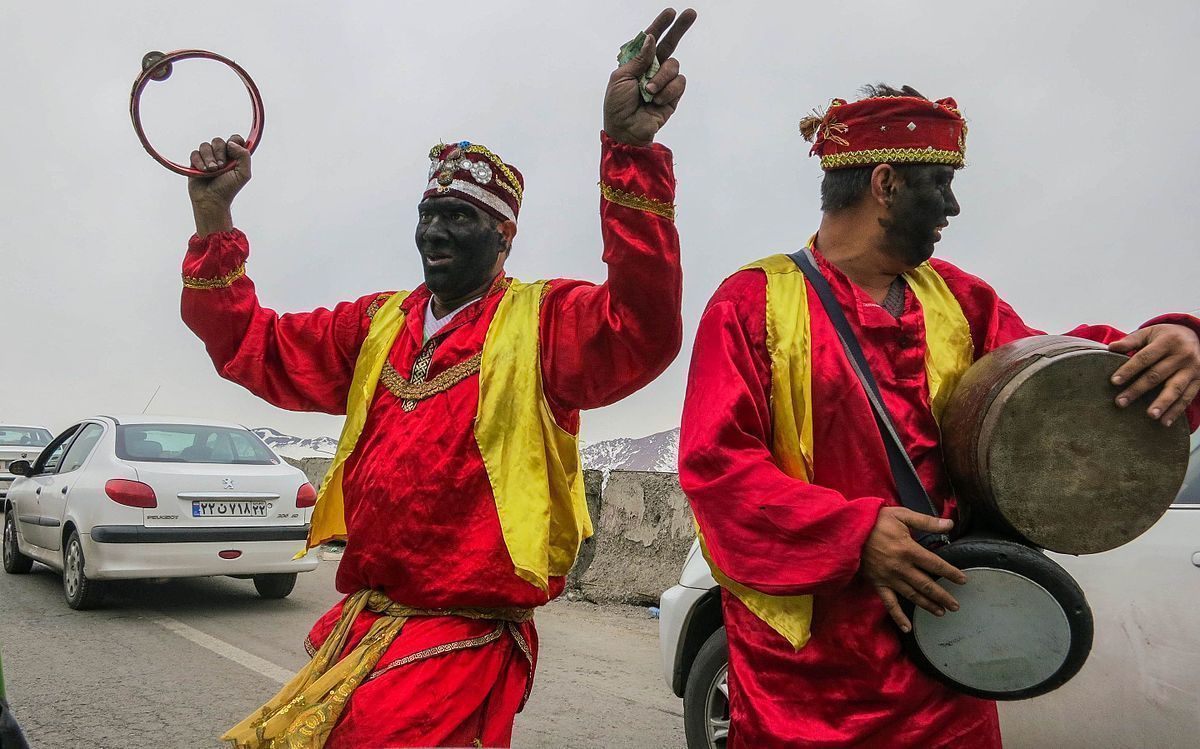This week marks the start of the New Year for more than 300 million people around the world — foremost among them the people of Iran, for whom it is the most important festive occasion of the year.
Nowruz is also celebrated by the Parsis on the Indian subcontinent; the Kurdish people of Iraq, Syria and Turkey; Iraqi Turkmen; Turkish Azerbaijanis and Yoruks; Kazakhs in the Bayan-Olgii Province of Mongolia; and the Uyghur, Kazakh, Uzbek, and Kirgiz people in China. Though the customs and traditions vary, many are shared.
How many know the origins of this ancient and so profoundly cherished tradition?
The word “Nowruz” is a compound of two Persian words, “now” and “ruz,” which together mean “new day.” The first day of Farvardin, the first month of the Iranian solar calendar, falls on or around the first day of spring on the Gregorian calendar, the 21st of March.
Ushering in the most beautiful season of the year, Nowruz celebrates the return of spring and the rebirth of nature in the Northern Hemisphere. It begins at the stroke of the vernal equinox – the precise moment when the sun crosses the celestial equator heading northward, and when day and night are nearly of equal duration. This year, the vernal equinox occurs on March 20 at 10:29 UTC (Coordinated Universal Time).
Though a secular holiday for Iranians today, Nowruz has its roots in Zoroastrianism, and dates back more than 3,000 years to at least the 6th century B.C. – a time when the ancient, non-literate, and pastoral people of the land venerated divinity through their experiences in the world around them. Nowruz is the focal point of the Zoroastrian year, and its holiest and most joyful festival: a celebration of the renewal of nature, when winter gives way to spring and darkness gives way to light; and a victory for the spirit of the sun, as it begins to gather strength and overcome the cold and gloom winter. For Zoroaster, “it was the symbol of a still more glorious victory to come, when the struggle between good and evil on all physical, moral and spiritual planes would end in total victory for the good” (according to an essay by Mary Boyce in Encyclopedia Iranica.)

According to popular legend, the institution of Nowruz is attributable to the mythical Persian king, Jamshid. In Ferdowsi’s epic, Shahnameh, the feast commemorates Jamshid’s ascent to the skies in a chariot built by the demons he subdued and forced into the service of mortals. For the 10th-century writer, Al-Tha’alibi, (as quoted by Mary Boyce in Encylopedia Iranica), “it was the day of Ohrmazd of the month of Farvardin, the first day of spring which is the beginning of the year, the renewal when the earth revives froms its torpor. People said: ‘It is a new day, a happy festival, a true power, a wondrous King!’ And they made this day, which they called Nowruz, their chief festival.’ ”
The Achaemenid kings celebrated Nowruz at Persepolis, their capital. It is said that the parade of gift-bearers depicted in the bas-reliefs of the palace walls represent the Nowruz ceremonies. Under the Sassanid kings, the secularized Nowruz was a time of lavish celebrations, when newly enthroned kings celebrated their official coronation, and monarchs held court. Following a reform of the calendar in 1079, the date of Nowruz was set at the vernal equinox on the first of Farvardin, and kept constant by making it one day before the New Year festival every four years.
Profoundly ingrained in Iranian traditions, history and cultural memory, Nowruz survived the Islamic conquest, and was legitimized and allowed to flourish because it was associated with the splendor and divine power of the royal courts of pre-Islamic Persia. It held particular appeal with Persia’s Islamic dynasties because, unlike the religious feasts, where they were unable to appear and be celebrated as the idol of the day, Nowruz provided them with a strictly non-Islamic channel for affirming and enhancing their power and prestige. The Nowruz ceremonies thus became increasingly sophisticated and protocol-heavy royal occasions under the Safavids, Qajars and Pahlavis. Yet the festivities were by no means restricted to the royal courts, and were also held in villages, towns and cities across Persia.
Today, Nowruz is celebrated with great zeal by all Iranians, despite attempts by the authorities in the immediate aftermath of the Islamic Revolution to dampen public enthusiasm. Government offices are closed for five days, and educational institutions for as many as 13 days. Nowruz brings joy and happiness into the lives of the people. For Iranians, it is a time of renewal, of personal pride and of cordiality – a time to settle differences and renew bonds, visit family and friends and pay respect to elders.

Nowruz is heralded by Haji Firuz, a traditional character in Iranian folklore who appears in the streets and entertains passers-by, spreading good cheer and announcing the New Year. His face is covered in soot, and he is clad in bright red clothes and a long, cone-shaped hat. People of all ages gather around him, tossing him a few coins as he plays his tambourine. Haji Firuz sings popular folk songs such as:
Haji Firuz-e / Sal-I ye ruz-e sal-I ye ruz-e
(It’s Haji Firuz/[He’s] only one day a year.)Hame midunan / Man-am midunam
(Everyone knows / I know as well.)Eyd-e nowruz-e / Sal-I ye ruz-e
(It is Nowruz / It’s only one day a year.)
Preparations for Nowruz begin weeks in advance. Gardens are planted with pansies, violets, primroses, and daffodils. Homes undergo a thorough spring clean, or Khaneh Takani(shaking the house). Every corner of the home is meticulously cleaned, from the yard all the way up to the attic. Nothing is spared: from carpets, drapes, and bedding to cupboards and windows, everything is thoroughly dusted and scrubbed. Traditionally, rooms were cleaned to ward off the evil eye, and subsequently sprinkled with soda ground in a brass mortar by one, three, five or seven young girls and dissolved in a jug of vinegar. Tattered household items were replaced and damaged crockery was smashed to avert misfortune.

A fortnight before Nowruz, wheat, barley or lentil seeds are placed in water to germinate in every household. The germinated grains are then spread over an earthenware plate and allowed to grow. The sprouts, known as Sabzeh, grow to a height of a few inches by the time Nowruz arrives, and the resulting mass of green is decorated with a red ribbon for the Sofreh-ye Haft Sin and kept until the end of the holidays.
New Year shopping, or Kharid-E Nowruzi, is a family affair. Every member of the household, particularly if they are a child, is outfitted with new clothes, shoes, socks, underwear to be worn on Nowruz, when it is customary to wear at least one new item of clothing. New and shiny gold and silver coins and crisp, fresh banknotes are obtained from the bank to hand out as eydi, or New Year’s gift.
In the days and weeks leading up to Nowruz, the bustling shops and bazaars are lavishly decorated. Sweets, fruits and nuts are attractively displayed next to hyacinths, gold fish and other Nowruz symbols. People of all walks of life flock to the bazaars, lining up at confectionary stores stacked with boxes of sweets to buy large quantities of treats for the holidays, including:
- Ajil Shirin– shelled pistachios, almonds, hazelnuts, walnuts and roasted chickpeas, mixed with raisins, dried mulberries, apricots, and figs;
- Baghlava– small filo pastries filled with a ground almond and sugar mixture spiced with cardamom, finished with rosewater-scented syrup and garnished with slivered raw pistachios;
- Nan-e Berenji– small round cookies made with rice flour flavored with cardamom and garnished with poppy seeds;
- Nan-e Nokhodchi– small four-leaf clover shaped cookies made with chickpea flour flavored with cardamom and garnished with slivered raw pistachios;
- Sohan Asal– small brittles made with sugar, honey, slivered almonds and saffron and garnished with slivered raw pistachios;
- Toot– rose-water-flavored mulberry-shaped marzipan.
Some of these sweetmeats are homemade.
Samanu, a sweet pudding, is prepared especially for Nowruz. A large amount of wheat is soaked in water (preferably purposefully collected rain water) for three days, then spread on a large metal tray and covered with a white cloth. Once germinated, the wheat is minced and ground in a mortar and the sap mixed with hot water, oil and flour. The mixture is then cooked slowly.
Traditionally samanu is made by a party of women, sitting in a circle around the huge pot, singing songs and taking turns to stir the cooking mixture. The entire process takes up to a week, with the final phase in the cooking lasting from late in the evening until daylight. In the morning, a portion of the sweet pudding is reserved for the Sofreh-ye Haft Sin, while the rest of the still warm samanu is distributed among neighbors, relatives and friends.
The Sofreh-ye Haft Sin is a quintessential part of Nowruz, specific to Iran and a relatively recent addition that became widespread only in the last century. (It is not even mentioned in the chronicles of 19th-century travelers and historians.) According to Encyclopedia Iranica: “The essential objects of the Nowruz table are very ancient and meaningful, while the idea of the Haft Sin is recent and the result of popular fancy tastefully developed into a pleasant ritual.” The Zoroastrians and Kurds, who are ardent guardians of ancient Persian traditions, do not partake in the Haft Sin; nor do the Afghans and Tajiks, who also celebrate Nowruz.
For Iranians today, however, the Sofreh-ye Haft Sin is to Nowruz what a Christmas tree is to Christmas. On the eve of Nowruz, each household lays out an elaborate ceremonial spread on a table or carpet in a room normally reserved for entertaining guests. The Sofreh-ye Haft Sin presides over the household throughout the holiday, as families and friends visit each other to exchange best wishes for the new year.
Adorning a table cloth or Sofreh are the following essential elements, rich in folklore and symbolism and the reflection of the beliefs of the ancient pastoral people of Iran:
- A standing mirror – representing cleanness and honesty;
Lit candles (traditionally one for each child) – representing enlightenment and happiness; - A copy of the Koran or other holy scripture (or the Divan of the poet Hafez);
- A goldfish swimming in a bowl of water – representing life;
- A pot of flowering hyacinths or Sonbol – representing the coming of spring
- One, three, five, or seven painted eggs – representing fertility;
- A few newly minted coins or Sekkeh – representing prosperity;
- Wild rue seeds or Sepand (esfand) placed in an incense burner and burned just after the turn of the year – to purify and ward off the evil eye;
- Rose water – for its magical cleansing powers.
Many households also add a jug of rainwater collected earlier, and/or a bowl of water containing a green leaf of pomegranate, and/or a seville orange or narenje floating in a bowl of water, representing the earth floating in space.
The Haft Sin is a crucial component of the ceremonial spread, literally meaning seven or Haft items (a sacred number since ancient times) starting with the letter S or Sin in the Persian alphabet which each promise a blessing for the coming year, namely:
- Sabzeh(germinated sprouts) – representing rebirth
- Samanu(sweet pudding) – representing affluence
- Seeb(red apple) – representing beauty and health
- Seer(garlic) – representing medicine
- Senjed(dried fruit of the oleaster tree) – representing love
- Serkeh(wine vinegar) – representing age and patience
- Somaq(sumac seeds) – representing the color of sunrise and the victory of light over darkness.
Sohan Asal is typically part of the Haft Sin as well, along with other confectionaries. Iranians believe that by eating them, their life will be “sweet” and good in the coming year. Many households add still other items beginning with the letter Sin, such as Sabzi (fresh herbs such as tarragon and basil) and Sangak bread to their Haft Sin. So the Haft Sin invariably has more than seven items beginning with the letter ‘sin’ on it.
The precise time of the vernal equinox or Tahvil-e Sal (turning point of the year) is announced in advance, and eagerly awaited by all, especially the young. The candles on the Haft Sin table are lit shortly before, and the members of the family, all bathed and clad in new or clean clothes, sit around the table, quietly reciting prayers to impart good will to all. It is important for everyone to be gathered around the Haft Sin at the time of the Tahvil to ensure that they are together for the rest of the year. As the countdown on radio or television ushers in the New Year, the young and old cheer, Sal-e No Mobarak! (Happy New Year!)

A spirit of joy and happiness fills the air, as family members embrace each other and exchange good wishes. Traditionally, children kiss the hands of their parents and elder family members, who, in turn kiss them on the cheek (when they are boys) or the forehead (when they are girls). The family patriarch hands them their eydi (a banknote, gold or silver coin placed inside the Koran) which is kept as a token of their blessing. The junior members of the family then offer their greetings to their elder siblings. Sweets are offered to each member of the household to fill their lives with sweetness in the coming year. It is also customary for the master of the house to sprinkle each family member with rose-water and wish them a happy New Year. The candles are left flickering to burn themselves out.
Following a still widespread belief on the morning of Nowruz, a child or a handsome adult must knock at the door. When asked: “Who is it?” and “What have you brought?” they must reply: “I am fortune, and I bring health and prosperity.”
The customary Nowruz meal is Sabzi Polo Mahi, herbed rice cooked with parsley, coriander, chives, dill and fenugreek (symbolizing rebirth), and served with Mahee Sefid or Caspian whitefish, or smoked fish such as haddock (symbolizing life). Kuku-ye Sabzi, or fresh herb-stuffed frittata made with the same herbs, is another traditional Nowruz dish, symbolizing rebirth and fertility (eggs) for the year to come.
Nowruz is a time to visit relatives and friends and pay respect to elders. As a rule, the elders and higher-ranking members of society are the first to be visited by those younger and lower in rank. They return those visits during the latter part of the holidays. Visits are short, and visitors are treated to tea, Nowruz sweetmeats and fruit. Children, young adults or household staff receive “eydis” from the elders, typically banknotes in the case of the household staff, or gold or silver coins for the others. The rounds of visitations often last as long as twelve days as relatives, friends and acquaintances pay their respects to each other.
Nowruz is registered on UNESCO’s Representative List of the Intangible Cultural Heritage of Humanity by 12 countries including Iran, Afghanistan, Azerbaijan, India, Iraq, Kazakhstan Kyrgyzstan, Pakistan, Tajikistan, Turkey, Turkmenistan and Uzbekistan. Since 2010, March 21st has been proclaimed the International Day of Nowruz by the United Nations General Assembly.


No comments:
Post a Comment